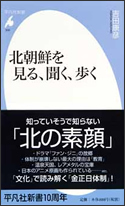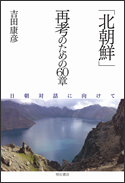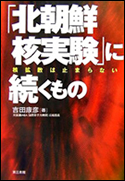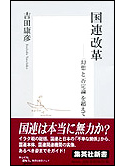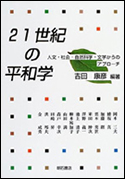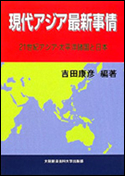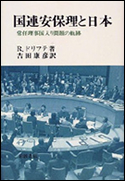YOSHIDA Yasuhiko (吉田 康彦)
(Visiting Professor, Osaka University of Economics and Law)
Qingdao, China, 26?30 October 2008
OUTLOOK ON WORLD NUCLEAR POWER
Nuclear power is being re-assessed world-wide in view of progressing climate change and oil price increases and a sharp rise in energy needs, especially in China and India. The Western media describe it as “nuclear renaissance”, because nuclear power had been unpopular for more than 20 years, especially since the Chernobyl Accident in 1986.
At present, 439 nuclear power stations are in operation in 30 countries and Taiwan, with a total annual output of nearly 400-million kilowatts accounting for 15 percent of the world’s electricity production. Last year and this year alone, four stations were newly connected to grid in Russia, two in China, one each in India and the United States, bringing an annual increase in total nuclear electricity output to 5-million kilowatts. Furthermore, 39 nuclear power stations are being constructed in 13 countries, namely eight each in China and Russia, six each in India and South Korea, three each in Japan and Romania, and two each in Ukraine and Taiwan.
In addition, construction of 53 new stations is being planned in 16 countries, including such new countries as Iran, Indonesia, Egypt, Israel, Kazakhstan, Turkey and Vietnam. When construction of those planned stations is completed, more than 530 stations in nearly 40 countries are expected to yield nearly 500-million kilowatts of electricity a year all over the world, satisfying nearly 20 percent of global electricity needs.
Conspicuously, more than two-thirds of those being constructed and more than half of those planned are in China, India and the other developing countries. The world nuclear market is estimated to produce some one-trillion dollars for the coming 20 years, or 50-billion dollars each year, being invested on costs of acquisition of material, construction and operation of those new nuclear power plants.
FACTS AND FIGURES IN JAPAN
Japan is the largest in Asia in the scale of nuclear power. There are 55 nuclear power plants, yielding more than 49,000 megawatts of electricity a year, which accounts for just one-thirds of the nation’s electricity consumption. In terms of nuclear power output and the number of units, Japan ranks third in the world, next to the United States and France.
Japan, with a population of 128-million residing in four main islands, scarce of underground natural resources, depends on nuclear power as a most reliable and stable energy source, supplying 10 percent of primary energy and 30 percent of electricity needs. Beside nuclear power, coal, natural gas and oil --- three major fossil sources?still -make up a majority of Japan’s energy production, more than two thirds of the nation’s total energy needs.
The rest ---still less than 10 percent---is provided by soft and natural energy sources, such as hydro, biomass, geo-thermal, as well as wind and solar power. In the wake of recent crude oil price increases, coal and nuclear power are most viable economically. Coal, however, is the worst choice in carbon dioxide emissions.
Nuclear power, therefore, is now regarded as the nation’s key energy sources at least for the coming half a century. Japan, the only country as a non-nuclear-weapon state, possesses a full nuclear fuel recycling program at home, reprocessing plutonium from spent fuels out of the light-water reactors. Plutonium, however, keeps increasing in volume as a stockpile without being used as fuel for fast-breeder reactors (FBR) or light-water reactors as MOX fuel, mostly due to public oppositions.
A plutonium-consuming FBR prototype, the MONJU has been left idle for the past 13 years after causing a fire accident in a liquid sodium pipeline circulating around the reactor. The MONJU is expected to be allowed to resume operation within 2008, thus paving the way for a full commercialization of the FBR by the year 2050.
In addition to 55 nuclear power reactors, mostly light-water-cooled ones using low-level enriched uranium as fuel, 14 more reactors are being constructed or planned to cope with global warming to reduce fossil fuel consumption.
NO FATAL REACTOR ACCIDENTS IN THE PAST
Japan had a long record of nuclear safety. There had been no serious accident in the past, except for low-level radioactive leakage incidents and other minor troubles. Nobody had been killed at all. But one happened in 1999, when two workers were killed in a small uranium-processing plant in Tokai Village, north of Tokyo. The mishap was the outcome of double negligence? a lapse in safety procedures and the workers’ ignorance of volatility of radioactive material.
Another fatal accident happened in 2004 in a nuclear power station of the Kansai Electric Company on the Japan Sea coast. It was a boiled water leakage accident in an electricity-generating turbine, killing five workers on duty.
The two cases, however, did not occur in a nuclear reactor itself. Therefore, the Japanese Government and utilities are proud of safety records in reactor operations for the past five decades.
The Chernobyl Accident in April 1986 dealt a heavy blow to the world’s nuclear industry, leading to abolition of nuclear power plants in Austria and Italy, and to a gradual phase-out in Sweden, Germany, Switzerland, Belgium, the Netherlands and Spain. The only exception was France, which produces 80 percent of electricity by nuclear power, exporting electricity to neighboring countries in Europe.
Japan, another exception, managed to overcome a critical period by using the prestige and international influence of the IAEA, which, upon request by the Japanese Government, sent a number of technical review missions to local nuclear power plants and concluded that they were being operated safely. Their assessment was that Japan indeed provided a model in safe and stable operations.
In fact, it was rather the IAEA which learned lessons from the Kashiwazaki-Kariha Nuclear Power Plant of the Tokyo Electric Power Company (TEPCO), composed of seven one-million-kilowatts-class reactors, which was hard hit by a violent earthquake in July 2007. They could escape from any casualties or radioactive leakage, though they still undergo repair works. The plant, the largest nuclear complex in Japan, accounts for nearly 10 percent of the nation’s nuclear power generation.
DEADLOCK IN NUCLEAR FUEL CYCLE
The World Commission on Sustainable Development, which laid a foundation on the 1992 Rio de Janeiro Earth Summit, had concluded in 1987 that nuclear power had three vital shortcomings, namely safety, radioactive waste management and the danger of proliferation.
Apart from safety, Japan has two obstacles. No solution has been found in radioactive waste disposal. The nation has been unable to find a site to dispose of high-level radioactive waste material. A noted Japanese scientist had once described Japan’s nuclear industry as an apartment without toilet.
The Japanese Government has been recruiting from local communities a waste disposal site in return for a huge amount of subsidies in compensation. But no towns or villages have reacted positively in response to the government’s call.
The United Sates and Finland have managed to designate such sites, while preparatory work for a final selection is being made in France, Sweden, Canada and Switzerland. The Japanese Government and utilities place an expectation on the possibility of the Russian Federation offering a candidate site in uninhabited Siberia as part of international cooperation and as source of foreign currency revenues.
Another headache is an accumulated plutonium stockpile, as already stated. At present, 46 tons of plutonium is possessed by Japan at home as well as at two reprocessing plants in Britain and France. Nuclear opponents claim this stockpile is equal to 5,000 Nagasaki-type nuclear bombs, though it is under full surveillance of the IAEA safeguard system.
Japan’s first large-scale plutonium-reprocessing plant, capable of producing 800 tons of plutonium a year, started its test-run operations at Rokkasho-mura in Aomori Prefecture in Northern Japan in 2005. However, full-scale operations have been delayed due to repeated minor technical troubles. .
As a matter of fact, there is no possibility of nuclear proliferation taking place from Japan, to which the IAEA gave an exceptional treatment in 2005, as an ideal case under its safeguard system. It is called an integrated safeguard system.
Technically transparent, but politically volatile,--- this is the circumstances under which Japan is placed. Japan faces strained relationship with North Korea, whose nuclear programs remain unsettled in the Six-Party Talks in Beijing. Northeast Asia is a stage of political confrontation, as the Middle East and South Asia.
Denuclearization of the Korean Peninsula is in deed necessary, not only to secure peace and stability of Northeast Asia, but also to guarantee peaceful uses of nuclear energy within the region.
In the meantime, U.S. President George Bush announced in February in 2006 that the five nuclear-weapon states and Japan would be allowed to possess uranium enrichment and plutonium reprocessing plants at home, which, according to Mr. Bush, should be open to the other nuclear reactor-operating countries in the stable supply of nuclear fuel. President Bush hopes that regionally-centralized nuclear fuel banks could contribute to strengthening a nuclear non-proliferation regime.
Mr. Bush’s initiative, called the Global Nuclear Energy Partnership (GNEP) indicates international recognition of Japan’s nuclear fuel cycle program and its advantageous status in peaceful uses of nuclear energy. But the Bush proposal is likely to be a double-edged sword for Japan.
This means creation of three categories in the status under the NPT (Nuclear Non-proliferation Treaty) regime; namely, (1) the five nuclear-weapon states, (2) the states possessing nuclear fuel recycling programs, and (3) the states operating only nuclear reactors.
A majority of developing countries are critical of Mr. Bush’s initiative as additional discrimination in the world nuclear order.
Category (1) and (2) are identical, except for Japan. Under the NPT, Japan is not a nuclear-weapon state, but international suspicions of Japan’s possible nuclear armament are expected to mount abroad, as a result of this new categorization. Accumulation of unused plutonium at home is likely to add fuel to such suspicions.
CONCLUSIONS
The Japanese Government has launched an international initiative based on 3S-based nuclear infrastructure; namely, safeguard, safety and security. Safeguard is an IAEA inspection scheme for nuclear non-proliferation, while security in this jargon means measures against nuclear terrorism and physical protection from radioactive materials. The 3S principle was endorsed in a final declaration by the G8 Summit in Toya-ko, Hokkaido, in July 2008.
Within the framework of this initiative, Japan, in cooperation with the IAEA, is prepared to activate its training program for nuclear engineers in Asia, by organizing seminars, workshops and other forms of information exchanges. What is needed in this undertaking is the spirit of equality and humbleness to learn from each other and strive for mutual benefits.
SOLAR AND WIND POWER AS ALTERNATIVE ENERGY
Although the subject of this presentation is nuclear power, I wish to take this opportunity to discuss solar and wind power as new and renewable energy sources just briefly, as many of you might be interested.
As you see in the power point projection chart, new and renewable energy sources are still marginal or even non-existent in the world’s major economic powers.
As for solar energy, Japanese manufacturers, such as Sharp, San-yo and Kyocera, until recently, had accounted for more than half of the world’s entire production of photovoltaic panels for electricity.
Japan, therefore, had been enjoying the top share in solar power generation. The top rank was taken over by Germany in 2005. China, now keen to manufacture lower-priced silicone panels, is expected to become top-runner in the near future.
At present, two out of 10 households living in independent houses in Japan are equipped with small-size photovoltaic panels, generating a total of one thousand megawatts of electricity a year. This accounts for nearly 10 units of thermal power plants of average size.
As for wind power, Germany, under a strong influence of the Green Party in coalition with Chancellor Angela Merkel of the CDU, also takes the lead in wind power generation, with an annual output of more than 20-thousand megawatts, followed by Spain, the United Sates and Denmark. The European Union plans to meet 12 percent of primary energy needs and 21 percent of electricity demand by the year 2010.
More than 15 percent of electricity in Denmark comes from wind mills, which are suitable for hilly regions facing the oceans. High potentialilty exists in China, Korea and Vietnam.
These two new and renewable energy sources, benign to environment without emitting carbon dioxide or radioactive wastes, sound attractive with a clean and clear image. However, neither of them is capable of producing large-scale power for industrial use on a constant and stable basis. No power is produced while it is cloudy or during the night, or while there are no winds. In addition, they are not viable economically. Electricity generating costs are several times higher than nuclear and fossil fuel ones.
Therefore, both solar and wind power is likely to remain auxiliary and subsidiary energy sources, unless any technological breakthrough should come out.


